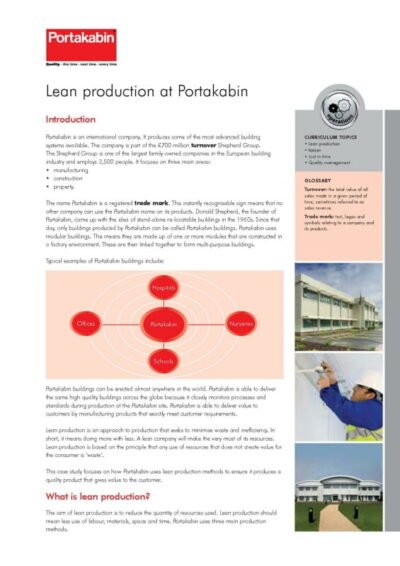Variable pay, often referred to as performance-based pay, is a compensation strategy that links a portion of an employee’s earnings to their performance or the performance of the organisation as a whole. Unlike fixed salaries, which remain constant regardless of individual or company performance, variable pay can fluctuate based on various metrics, including sales targets, project completion, or overall company profitability. This approach has gained traction in recent years as organisations seek to motivate employees, align their interests with corporate goals, and foster a culture of accountability and high performance.
The concept of variable pay is rooted in the belief that financial incentives can drive behaviour and enhance productivity. By offering employees the opportunity to earn more based on their contributions, companies aim to create a more engaged workforce. This method not only rewards high achievers but also encourages all employees to strive for excellence.
As businesses navigate increasingly competitive landscapes, variable pay has emerged as a critical tool for attracting and retaining top talent while simultaneously driving organisational success.
Summary
- Variable pay is a form of compensation that is contingent on an employee’s performance or the performance of the company.
- Types of variable pay include bonuses, profit sharing, stock options, and commission-based pay.
- Variable pay can motivate employees to perform at their best, align their interests with the company’s goals, and attract and retain top talent.
- Challenges of implementing variable pay include designing fair and effective plans, managing employee expectations, and ensuring clear communication.
- Factors to consider when implementing variable pay include the company’s financial situation, industry norms, employee preferences, and legal and regulatory requirements.
Types of Variable Pay
Variable pay encompasses a variety of compensation structures, each designed to meet specific organisational goals and employee motivations. One of the most common forms is performance bonuses, which are typically awarded based on individual or team achievements. These bonuses can be tied to specific metrics such as sales figures, project milestones, or customer satisfaction scores.
For instance, a sales team might receive a bonus for exceeding quarterly sales targets, thereby directly linking their efforts to financial rewards. Another prevalent type of variable pay is profit sharing, where employees receive a share of the company’s profits based on predetermined criteria. This approach not only incentivises employees to work towards the company’s success but also fosters a sense of ownership and belonging within the organisation.
For example, a manufacturing firm might distribute a percentage of its annual profits among employees, encouraging them to contribute to cost-saving initiatives and efficiency improvements that ultimately benefit the bottom line. Commission-based pay is another widely recognised form of variable compensation, particularly in sales-oriented roles. In this structure, employees earn a percentage of the sales they generate, creating a direct correlation between their efforts and their earnings.
This model is particularly effective in motivating sales personnel to exceed their targets and pursue new business opportunities. For instance, a real estate agent may earn a commission for each property sold, incentivising them to close deals and expand their client base.
Benefits of Variable Pay
The implementation of variable pay offers numerous advantages for both employers and employees. One of the primary benefits is enhanced motivation and performance among staff members. When employees know that their efforts can lead to increased earnings, they are more likely to be proactive in their roles and strive for excellence.
This heightened motivation can result in improved productivity levels and overall organisational performance. Additionally, variable pay structures can help align employee interests with those of the organisation. By tying compensation to performance metrics that reflect company goals, employees are encouraged to focus on activities that drive success.
For example, if a company’s objective is to improve customer satisfaction, implementing a variable pay component based on customer feedback scores can motivate employees to prioritise service quality. This alignment fosters a culture of collaboration and shared responsibility for achieving organisational objectives. Moreover, variable pay can serve as an effective tool for talent retention.
High-performing employees are often attracted to roles that offer performance-based incentives, as they provide opportunities for financial growth commensurate with their contributions. By implementing variable pay structures, organisations can create an environment that not only attracts top talent but also retains it by rewarding exceptional performance.
Challenges of Implementing Variable Pay
Despite its numerous benefits, implementing variable pay can present several challenges for organisations. One significant hurdle is establishing clear and measurable performance criteria. If the metrics used to determine variable pay are ambiguous or difficult to quantify, employees may feel uncertain about how their efforts translate into financial rewards.
This lack of clarity can lead to frustration and disengagement among staff members. Another challenge lies in ensuring fairness and equity in the distribution of variable pay. Employees may perceive bias or favouritism if they believe that certain individuals or teams are receiving disproportionate rewards for similar levels of performance.
To mitigate this risk, organisations must develop transparent criteria for performance evaluation and ensure that all employees understand how their contributions are assessed. Additionally, variable pay structures can sometimes lead to unhealthy competition among employees. While a certain level of competition can drive performance, excessive rivalry may foster a toxic work environment where collaboration suffers.
It is essential for organisations to strike a balance between encouraging individual achievement and promoting teamwork to ensure that variable pay initiatives do not inadvertently undermine organisational culture.
Factors to Consider When Implementing Variable Pay
When considering the implementation of variable pay structures, organisations must take several factors into account to ensure success. First and foremost is the alignment of variable pay with organisational goals. The metrics used to determine variable compensation should directly reflect the company’s strategic objectives.
For instance, if an organisation aims to expand its market share, performance metrics could include sales growth in new territories or customer acquisition rates. Another critical factor is the communication of variable pay policies to employees. Clear communication is essential for ensuring that staff members understand how their performance will be evaluated and how it relates to their compensation.
Regular updates and feedback sessions can help reinforce this understanding and keep employees engaged in their performance goals. Organisations should also consider the potential impact of external market conditions on variable pay structures. Economic fluctuations or changes in industry standards may affect the feasibility of certain incentive programmes.
For example, during economic downturns, companies may need to adjust their variable pay offerings to remain competitive while managing costs effectively.
Examples of Variable Pay Structures
Numerous organisations have successfully implemented variable pay structures tailored to their unique needs and objectives. One notable example is Google’s use of performance bonuses tied to individual contributions and team achievements. Employees at Google receive annual bonuses based on their performance evaluations, which are conducted through a rigorous process involving peer reviews and manager assessments.
This approach not only incentivises high performance but also fosters a culture of continuous feedback and improvement. Another example can be found in the financial services sector, where many firms utilise commission-based pay structures for their sales teams. For instance, investment firms often offer financial advisors a commission based on the assets they manage or the products they sell.
This model encourages advisors to build strong client relationships and seek out new business opportunities while directly linking their earnings to their performance. In the retail industry, companies like Starbucks have implemented profit-sharing programmes that reward employees based on the overall profitability of the store. This approach not only motivates staff to enhance customer service and drive sales but also creates a sense of camaraderie among team members as they work together towards common financial goals.
Best Practices for Variable Pay Programs
To maximise the effectiveness of variable pay programmes, organisations should adhere to several best practices. First and foremost is the establishment of clear performance metrics that are both measurable and attainable. These metrics should be communicated transparently to all employees so that they understand how their efforts contribute to their potential earnings.
Regular feedback is another crucial element in successful variable pay programmes. Providing employees with ongoing performance evaluations allows them to track their progress towards achieving their goals and earning incentives. This feedback loop not only keeps employees engaged but also enables them to make necessary adjustments in real-time.
Furthermore, organisations should consider incorporating team-based incentives alongside individual rewards. While individual performance is important, fostering collaboration among team members can lead to greater overall success. By recognising both individual contributions and team achievements, organisations can create a more balanced approach that encourages cooperation while still rewarding high performers.
Finally, it is essential for organisations to regularly review and adjust their variable pay programmes based on changing business needs and employee feedback. Continuous evaluation ensures that incentive structures remain relevant and effective in motivating employees while aligning with organisational goals.
The Future of Variable Pay
As businesses continue to evolve in response to changing market dynamics and workforce expectations, the future of variable pay appears promising yet complex. With an increasing emphasis on employee engagement and performance-driven cultures, organisations are likely to continue exploring innovative ways to implement variable compensation structures that resonate with their workforce. The rise of technology will also play a significant role in shaping variable pay programmes.
Advanced analytics tools can provide organisations with deeper insights into employee performance data, enabling more precise measurement and evaluation processes. Additionally, as remote work becomes more prevalent, companies may need to adapt their variable pay strategies to account for diverse work environments and varying levels of employee contribution. Ultimately, the successful implementation of variable pay will hinge on an organisation’s ability to balance motivation with fairness while fostering a culture that values both individual achievement and teamwork.
As companies navigate these challenges, those that embrace flexibility and adaptability in their compensation strategies will be well-positioned to thrive in an increasingly competitive landscape.
Variable pay is a crucial component of compensation packages in many organisations, providing employees with the opportunity to earn additional income based on their performance. This article explores the concept of variable pay and its importance in motivating employees to achieve their goals. For further insights into the world of finance, check out this fascinating article on forex trading tips that can help individuals navigate the complexities of the foreign exchange market.
FAQs
What is Variable Pay?
Variable pay is a compensation that is contingent on the performance of an individual, team, or organization. It is a form of pay that can fluctuate based on predetermined criteria, such as meeting sales targets, achieving certain goals, or overall company performance.
How is Variable Pay Different from Fixed Pay?
Fixed pay, also known as base pay, is a set amount of compensation that an employee receives on a regular basis, such as an hourly wage or an annual salary. Variable pay, on the other hand, is not guaranteed and is based on specific performance metrics or outcomes.
What are the Types of Variable Pay?
There are various types of variable pay, including bonuses, commissions, profit-sharing, stock options, and performance-based incentives. These forms of compensation are designed to motivate employees to achieve specific targets and contribute to the overall success of the organization.
Why Do Companies Offer Variable Pay?
Companies offer variable pay as a way to align employee performance with organizational goals, increase motivation and productivity, and attract and retain top talent. It also allows companies to manage costs more effectively by tying compensation to performance.
How is Variable Pay Calculated?
The calculation of variable pay varies depending on the specific type of compensation. For example, bonuses may be based on individual or team performance, while commissions are typically tied to sales or revenue targets. Profit-sharing may be based on company profits, and stock options may be linked to stock price performance.
What are the Benefits of Variable Pay?
Variable pay can provide employees with the opportunity to earn additional income based on their performance, which can be a strong motivator. It also allows companies to reward and retain high-performing employees, while also providing a degree of flexibility in managing compensation costs.
 Intel A3 ePoster Edition 13 "Using innovation to create competitive advantage"
Intel A3 ePoster Edition 13 "Using innovation to create competitive advantage"  Live, breathe and wear passion (MP3)
Live, breathe and wear passion (MP3)  Lean production at Portakabin (PDF)
Lean production at Portakabin (PDF)  Primark A3 ePoster Edition 17 "Beyond corporate social responsibility"
Primark A3 ePoster Edition 17 "Beyond corporate social responsibility"  IKEA A3 ePoster Edition 14 "SWOT analysis and sustainable business planning"
IKEA A3 ePoster Edition 14 "SWOT analysis and sustainable business planning"  Planning for quality and productivity (PDF)
Planning for quality and productivity (PDF)  Intellectual Property Office A3 ePoster Edition 15 "Intellectual property and the external environment"
Intellectual Property Office A3 ePoster Edition 15 "Intellectual property and the external environment"  CIMA A3 ePoster Edition 13 "Financial information in decision making"
CIMA A3 ePoster Edition 13 "Financial information in decision making"  Enterprise Rent-A-Car A3 ePoster Edition 13 "Using a range of management styles to lead a business"
Enterprise Rent-A-Car A3 ePoster Edition 13 "Using a range of management styles to lead a business"  NDA A3 ePoster Edition 15 "Training and development at NDA"
NDA A3 ePoster Edition 15 "Training and development at NDA"  Intellectual Property Office A3 ePoster Edition 13 "Intellectual property rights and entrepreneurship"
Intellectual Property Office A3 ePoster Edition 13 "Intellectual property rights and entrepreneurship"  Parcelforce A3 ePoster Edition 13 "Customer service as strategy"
Parcelforce A3 ePoster Edition 13 "Customer service as strategy" 

